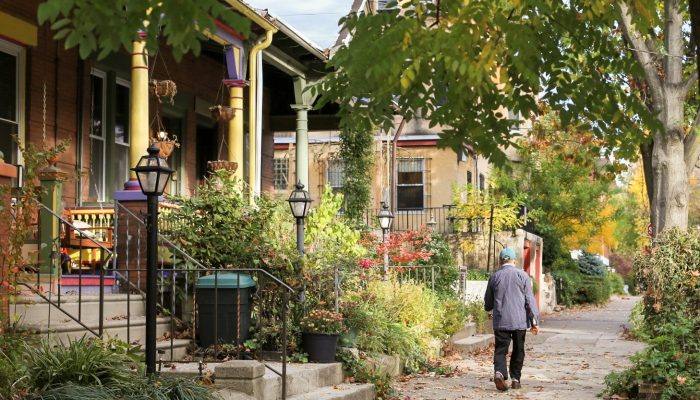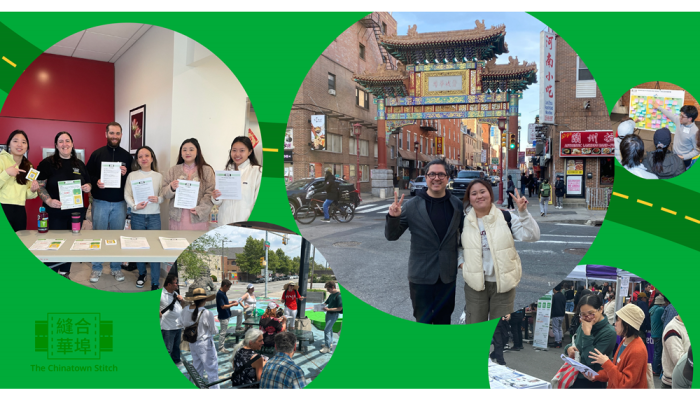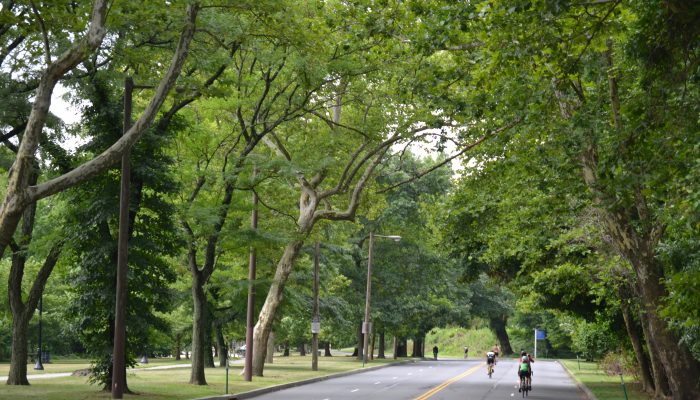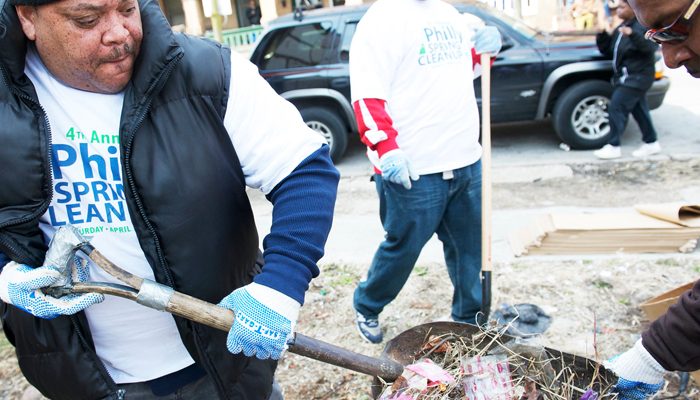‘Right-of-way’ means the legal right of pedestrians, cyclists, or vehicles to move through a route. For example, pedestrians have the right-of-way on a sidewalk.
Like houses, streets have deeds that explain how you can use them. The Streets Department’s Board of Surveys keeps a large catalog of these street legal cards. The cards show which streets the City dedicates for public use.
The Department of Streets is a local leader in publishing open data. Their latest dataset links to digitized (scanned copies) of these street legal cards and includes metadata. They also created an online Legal Card Application tool where you can see this data by street segment.
Tracking changes over time
The Department of Streets’ physical filing system contains thousands of legal cards. Some cards date back to the late 1800s. Handwritten notes on the legal cards highlight important facts about the streets. Some notes show the width of the street and sidewalks.
Street legal cards contain the official record of each street’s legal description. The City designed the cards to document the dates it dedicated a street for public use, how the public can use the street, and any changes to the street over time. Some changes you might see noted include the:
- addition of a new street as part of a larger development plan.
- change of the widths of streets as the sidewalk gets wider, or due to other streetscaping projects.
- addition of new turning lanes to a street.
- re-naming the street. For example, Market Street was once called High Street. You can use PhillyHistory.org to look up the old and new street names throughout the City.
Expanding from paper to digital access
The Department of Streets collaborated with the Office of Innovation and Technology’s (OIT) CityGeo team to create and host digitized versions of each street legal card in the cloud. This change means that the public can now access these cards online. This data powers the Department of Streets’ online Legal Card Application where you can see the data by street segment.
The City provides these informational services to give residents easier access to the details they need to complete their projects. Many people need to know the width of a street and any accompanying sidewalks for permit applications to build next to a property line, host block parties, or set up sidewalk furniture. Attorneys often need the details for lawsuits around adjoining properties.
The Board of Surveys and other City agencies also leverage this digital access for their own goals. Instead of digging through filing cabinets, they can find a card online and see the legal status of a particular street. This helps them efficiently plan, monitor, or reject projects that involve changes to existing street systems.
Keep in touch!
Have your own experience of using open data? Contact maps@phila.gov to share your story.
For information about City datasets and others, go to OpenDataPhilly.org. Visit this resources page for video tutorials and links to tools to help analyze data. Follow @PHLInnovation on Twitter to get alerts on future data releases, and join us on the public open data google forum.




